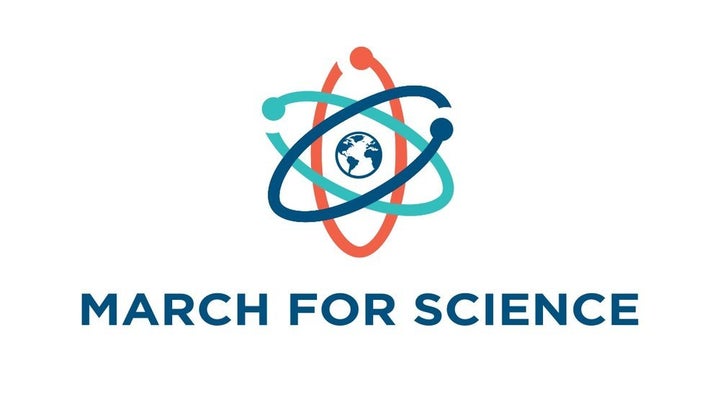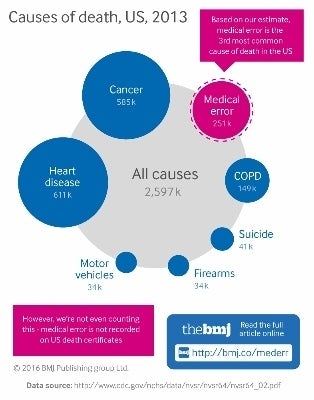
Philanthropists Susan and Henry Samueli
The response of the LA Times, STAT, Medpage, and most media to the visionary $200-million integrative health investment of Susan and Henry Samueli at UC Irvine has been a shameful display of media descent into Trump-like, polarizing tweets. Worse yet, the coverage has been a profoundly anti-science. These media, and others, have chosen to provide platforms to a small handful of individuals who for decades have denied the evidence of acupuncture, chiropractic, mind-body and multiple other integrative approaches.
By doing so, these media are missing the opportunity to explore and educate their readers on an investment in medical science and healthcare practice that may prove to be a national engine for the kind of systemic change that former Institute for Healthcare Improvement co-founder and CMS administrator Donald Berwick, MD has recommended as necessary righting of the damaging and destructive present course of the US medical industry.
From his LA Times podium, Michael Hiltzig first gives voice to David Gorski and then to Steven Novella, long-time colleagues and back-slapping companions as anti-integrative medicine vigilantes. Hiltzig quotes Gorski first, shaping the Samueli’s investment this way: “The only reason ‘integrative medicine’ exists is to integrate quackery into medicine.” Tiltzig immediately turns to Novella to use the Trumpish, name-calling term that Gorski himself favors: “In a blog post, Novella flayed UCI’s establishment of an integrative medicine curriculum as ’quackademic medicine.’”
The approach was repeated at STAT by Usha Lee McFarling. Her post was bleated out again by Medpage Today. McFarling gives the honor of shaping her story to Novella: ” ... putting an imprimatur of a university on things that have been discarded as medical fraud for 50 years.” She then turns to another lifer in anti-CAM activity, Timothy Caulfield. Caulfield doubles down against this “legitimization” message. Even the more balanced Inside Higher Education feature from Rick Selzer leads with Novella and frames the Samuelis’ philanthropic investment with this title: “Does $200-million Quack?”
It would be one thing if this were just journalistic laziness. Sure, go ahead and run polarizing copy based on a tweetish view of the universe that makes a story fit for afternoon TV. In fact, however, these media have chosen to trumpet fake news. They promote this polarizing grandstanding rather than honor the emerging scientific consensus that is yet poorly integrated into health professional education and practice - and that utterly backs the Samuelis’ investment and direction at UC Irvine:

Should media listen to these or those who call their evidence-based guidance “quackademic”?
- Joint Commission in a 2015 revision of its pain standard recommends multiple non-pharmacologic, integrative strategies including acupuncture, massage, chiropractic and relaxation therapies.
- Mayo Clinical Proceedings published an “Evidence-Based Evaluation of Complementary Health Approaches for Pain Management,” based only on research from the United States, offering scientific evidence for multiple integrative modalities and practices.
- American College of Physicians earlier this year updated its low back pain guideline, recommending that “physicians and patients initially select non-drug therapy with exercise, multidisciplinary rehabilitation, acupuncture, mindfulness-based stress reduction, tai chi, yoga, motor control exercise (MCE), progressive relaxation, electromyography biofeedback, low level laser therapy, operant therapy, cognitive behavioral therapy, or spinal manipulation.”
- National Academy of Medicine, in a report last month for the FDA, concluded that “nonpharmacologic interventions for pain treatment, including acupuncture, physical therapy and exercise, CBT, and mindfulness meditation, represent powerful tools in the management of chronic pain. Many are components of successful self-management.”
To drive a law-enforcement stake into the heart of integrative medicine’s naysayers who the LA Times and others are trumpeting, the Association of States Attorneys General have recently put insurers on notice that NAAG organizing state by state so that coverage strategies will support a new era of reimbursement of integrative approaches. Their campaign will support the research and clinical initiatives the Samuelis’ investment at UC Irvine will make possible: “When patients seek treatment for any of the myriad conditions that cause chronic pain, doctors should be encouraged to explore and prescribe effective non-opioid alternatives, ranging from non-opioid medications (such as NSAIDs) to physical therapy, acupuncture, massage, and chiropractic care.”

It’s time for media to stop giving a platform to those who deny the science behind integrative health and medicine
The roundhouse, condemnatory, “quackademic” perspectives of Gorski, Novella, Caulfield and their like toward complementary and integrative health and medicine need to be treated and dismissed by the LA Times and others as the anti-science that they are. Sure, discussion can be engaged over specific approaches or therapies. Yet giving a platform to this broad dismissal of the Sameulis’ investment is no different than repeatedly quoting non-believers in climate change at the top of an article about a massive, exciting effort to correct human environmental degradation.
And while the scale is different, both forms of science denial have blood on their hands. The residual, reactive, medical ideology of these anti-integrative careerists to which the LA Times and others give a platform is a barrier to potentially lifesaving directions toward which the Joint Commission-Mayo/NIH-American College of Physicians-NAM-Attorneys General jointly urge us - and the Samueli investment would propel us.
So what story might these media yet tell? A major challenge in this new direction in elevating non-pharmacologic, integrative practices and practitioners - and a health focus in general - is that neither academic medicine nor the service delivery infrastructure in the US medical industry yet respects much of this science. Nor does it knows, as former American Hospital Association chair Jonathan Perlin, MD, PhD has put it, “the recipe” for moving ”from sick care to health care.” The Samuelis’ investment at UC Irvine is precisely the kind of multi-disciplinary and interprofessional approach that can help guide us out of the damaging, drug-first, drug-dependent stupor that afflicts treatment not only pain but a myriad of other chronic conditions.
Must journalists be reminded of the urgency in transforming a medical industry that has been estimated to be the nation’s #3 leading cause of death at 251,000 per year?

Medical deaths are just one reason to empower explorations of systemic solutions such as the Samuelis’ investment will make possible.
Had the reporters taken the time to look past the tweetishness and easy polarizing, they would have found, in the Samuelis, a remarkable pattern of philanthropic investment over the past two decades that perfectly equips them as partners to support the creation of such a guiding beacon for US medicine’s re-orientation toward a new, integrative health-oriented therapeutic order. On the Institute’s website is the evidence of what may be considered their preparation for this leadership gift at UC Irvine:
- Research. Over 700 peer-reviewed publications that have helped, among other things, to create the evidence base behind these calls for non-pharmacologic solutions for pain treatment.
- Military Medicine. The Institute’s research work with the military, in partnership with former US Army Surgeon General Eric Schoomaker, MD, PhD and others, helped shape an environment in which Department of Defense and Veterans Administration facilities throughout the US are presently promoting whole person, integrative strategies.
- Prevention, Health Promotion. Their Wellness Initiative for the Nation (WIN), originally engaged in a collaboration with former US Senate Majority Leader Tom Daschle, proved instrumental in creating what is arguably the nation’s most significant whole system approach to health and wellness. This is the Affordable Care Act’s National Prevention, Health Promotion and Public Health Council. Notably, this Council’s charge formally recommends the “integrative health” approach the Samueli investment at UC Irvine would be exploring.
- Systemic Changes in Medical Delivery. The Institute’s Optimal Healing Environments work with the nations’ medical delivery organizations, including a partnership with the Institute for Healthcare Improvement (IHI), offers examples of systemic solutions such as, as noted above, former CMS administrator Donald Berwick has urged and the Samuelis’ investment would promote.
In fact Berwick, the IHI co-founder, champion of the Triple Aim and arguably the guiding voice for progressive, value-based transformation of the US medical industry, deeply acknowledges a way that the Samuelis’ past investment has, effectively, shaped the very vision for the future of US medicine that he is advocating with his peers. In a speech referenced in this March 2017 article on the Samuelis closure of the Institute’s - a prelude to their UC Irvine investment — this proponent of sweeping systemic solutions urged IHI’s hospital-based attendees on a 30-year journey toward what he calls a “salutogenic” or “health-creating” approach. Berwick named to his audience his mentors in his thinking.The list was dominated by integrative health leaders and capped “above all” by the individual the Samueli’s had empowered to run the Institute, Wayne Jonas, MD.
Thus far the media portrayal of the Samuelis remarkable $200-million investment has been shamefully dominated by a tweetish, Trumpish, side-show. There is still time to explore the exciting, substantial value that we the people may have to gain from the investment of this remarkable pair - an engineer and a mathematician. Their twin love of advancing STEM (Science, Technology, Engineering, Mathematics), a second major area of their philanthropy, provides the perfect, energetic combination for the multidisciplinary work needed to re-engineer the failing US medical industry toward health.
Reporters: stop giving a platform to anti-science. Do us all a favor and get serious, and scientific, about your reporting of an investment of the Samuelis at UC Irvine that - despite this apparently necessary stone throwing - may prove to be the most influential philanthropic investment in the substantial course correction that US academic medicine and medical industry need.

Artist rendering of the Susan and Henry Samueli College of Health Sciences
